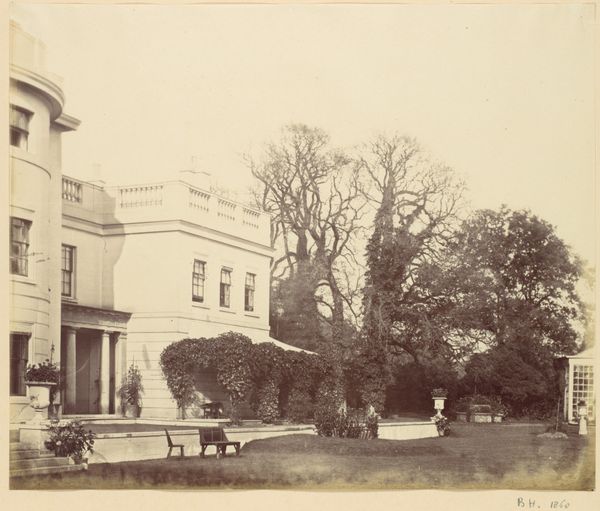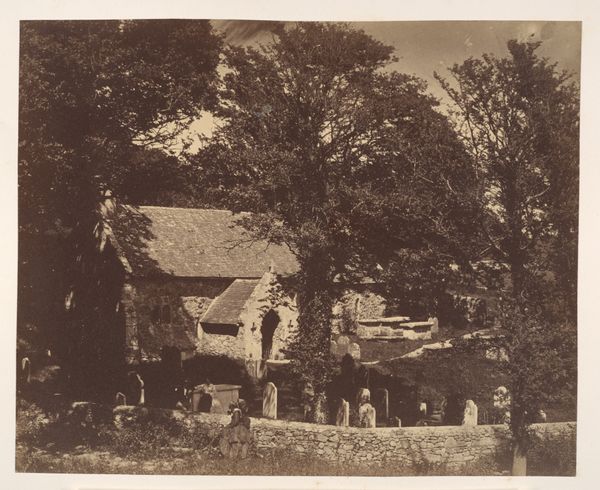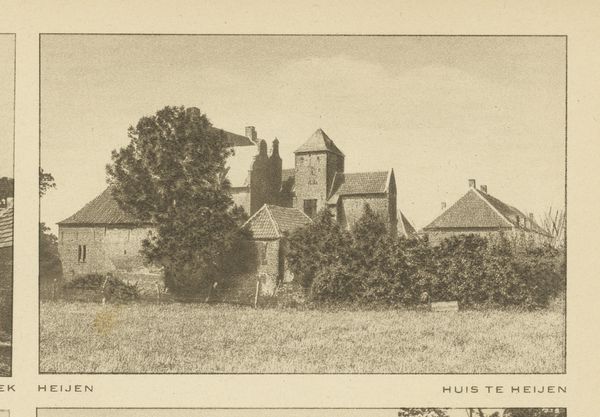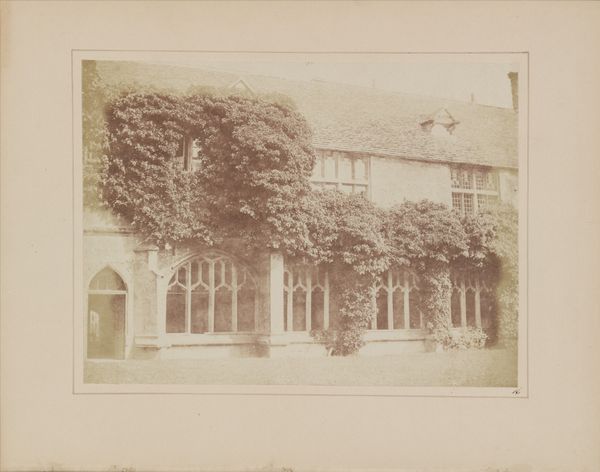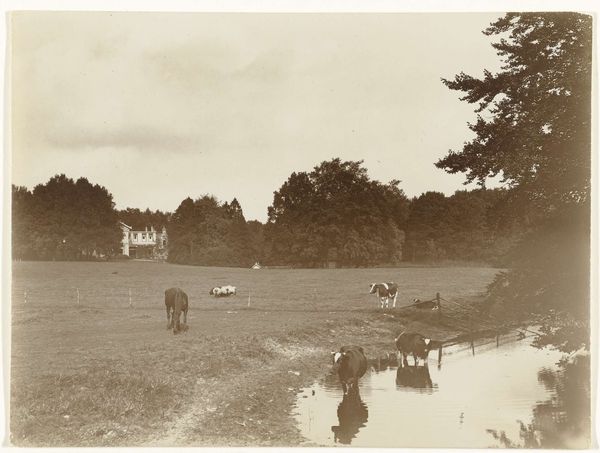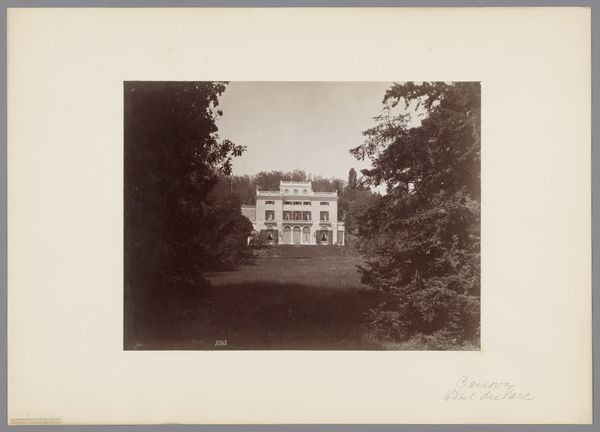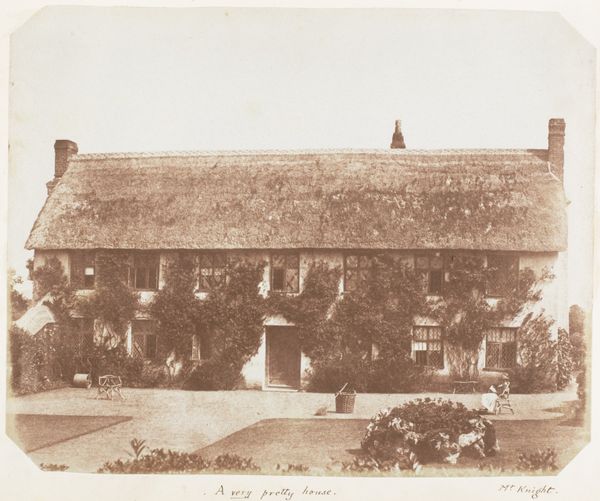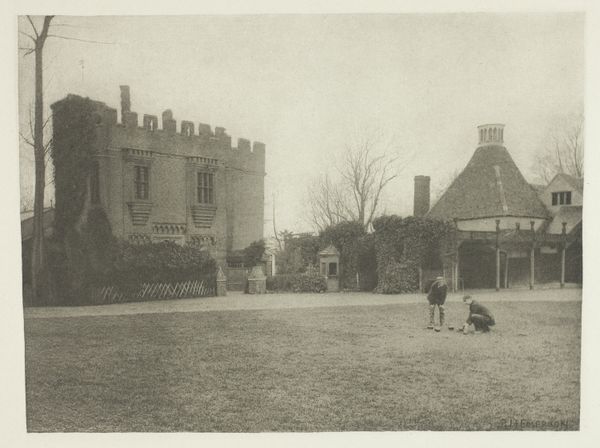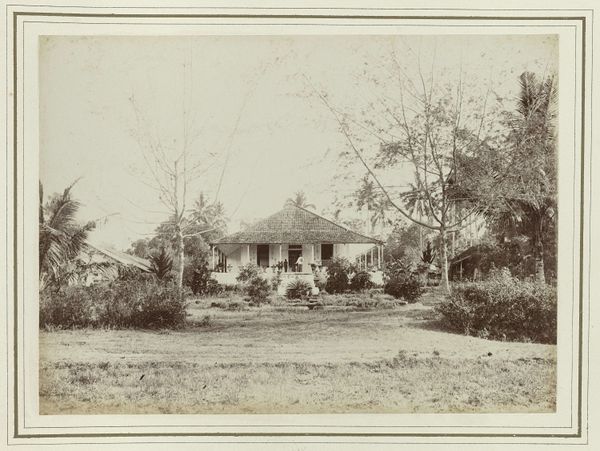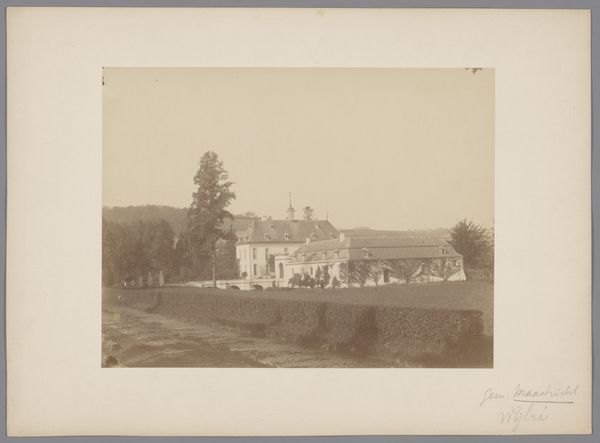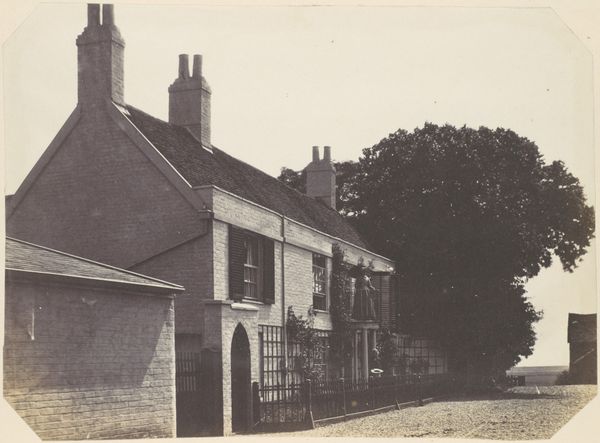
Dimensions: Image: 16.1 × 20.8 cm (6 5/16 × 8 3/16 in.)
Copyright: Public Domain
Curator: Here we have John Dillwyn Llewelyn's "Oakley Cottage," an albumen print from somewhere between 1853 and 1856. It's quite a captivating image. Editor: My immediate impression is a sense of ordered domesticity. There’s a certain calm in the composition, despite the suggestion of activity with the carriage waiting. A home ready for a day out, wouldn’t you say? Curator: Precisely. And I think that calm is key when we consider the context. Llewelyn, a man of considerable privilege, was deeply engaged in early photographic techniques, and also deeply involved in a system of values predicated on colonialist exploitation and rigid class hierarchies. He lived comfortably from this, which raises interesting questions. Who exactly benefits from these peaceful portrayals of English domesticity? Editor: The cottage itself is interesting from a symbolic point of view. The climbing ivy, the carefully arranged carriage, it all speaks to notions of cultivated gentility that were extremely popular at the time. What’s more is that every element from the carefully positioned carriage and horses to the attire of the figures outside projects such idealized image. The choice and placement of the horses themselves are very indicative. Curator: I agree completely. This is definitely an image carefully constructed to convey certain ideas about the British upper class. Look closely at the placement of the figures, not interacting, but existing beside one another in a way that almost obscures class disparity through forced harmony, all framed by what they see as their God-given birthright to occupy the space in the manner they do. I wonder too, who inhabited the space outside that frame and how were they restricted and prevented from doing so, let alone ever being photographed in a way that reflects the human condition beyond labor. Editor: It’s fascinating to think how symbols and societal structures intertwine in even seemingly straightforward depictions of home and family, in which a photograph acts as a curated window onto a particular vision of the world, wouldn't you agree? Curator: Absolutely, understanding those visual codes helps us unravel complex narratives and hold onto those stories to never repeat that time again. Editor: I am especially curious to keep on tracing what exactly constitutes the legacy and influence of this photograph. Curator: Me too! Thanks for this enriching exchange.
Comments
No comments
Be the first to comment and join the conversation on the ultimate creative platform.

